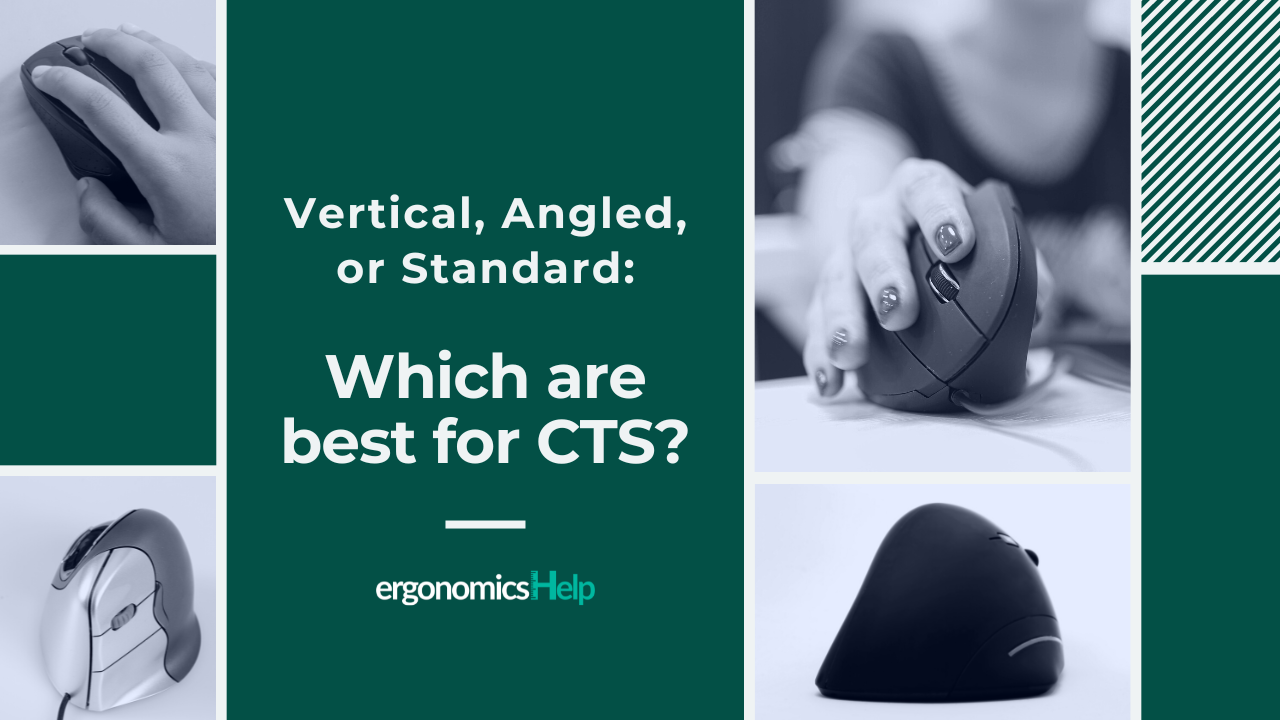Vertical, Angled, Or Standard: Which are best for CTS?
Jan 19, 2023
The elbow and wrist are some of the common areas of musculoskeletal disorders. And with the increase in computer usage, there’s also been an increase in carpal tunnel syndrome cases. Carpal tunnel syndrome (CTS) is a condition that causes pain, tingling, and numbness in the hand, more commonly at the base of the palm related to the median nerve.
While we can help our clients negate the effects of CTS by practicing good practices and implementing preventative measures, it’s just as important to recommend the use of ergonomic computer products to address ergonomics risk factors associated with the development of CTS. Your clients can benefit from using well-designed accessories, and ergonomic mouses are the right item to start.
But is there a "BEST" mouse to help reduce Carpal Tunnel Syndrome? Should you be removing all standard mice when you do ergonomics assessments? Do you have specific types or brands that you prefer to recommend to clients whenever you see CTS or other wrist/hand symptoms? Or if you see a mouse that’s inherently risky, do you take it upon yourself to suggest to your client to try a different mouse?
There are so many questions.
Well in today’s episode, we're talking about just that. From an angled mouse to a vertical mouse and everywhere in between, we’ll discuss some of the more popular mice on the market today to help you decide which mouse design will benefit your client’s well-being. I’m going to share key findings from relevant literature, so grab your notebook and be sure to take notes because you'll get value when you listen to this episode of The Business of Ergonomics podcast.
Today, you’ll hear:
→ [01:10] - Big announcement!
→ [03:46] - What are the different types of mice in the market today?
→ [04:47] - The mouse that I have liked to recommend in the past.
→ [05:25] - Literature #1: The standard computer mouse design causes carpal tunnel syndrome and other upper extremity musculoskeletal disorders.
→ [06:19] - Literature #2: Wrist pads and the vertical mouse alter the wrist position, but…
→ [08:02] - What you need to remember when recommending products for people with CTS.
→ [08:55] - Mouse selection hack you need to try.
→ [10:55] - Literature #3: The angled mouse was easier to use and reduced postural and muscular stressors.
What’s Next?
I hope this post gives you some ideas on which mouse to recommend to your clients.
If you're interested in the tactics involved with finding more paying customers, how to generate more income, and how to stand out from the crowd with your own ergonomics services, I encourage you to join me in the training that I’ll be hosting on January 31, 2023. Whether you're just getting started with your own ergonomics services or have years of experience running your own ergonomic consultancy, this training is surely a great help. Make sure to save your spot now, just click here to sign up today.
Resources for this episode:
→ Biomechanics and performance when using a standard and a vertical computer mouse
